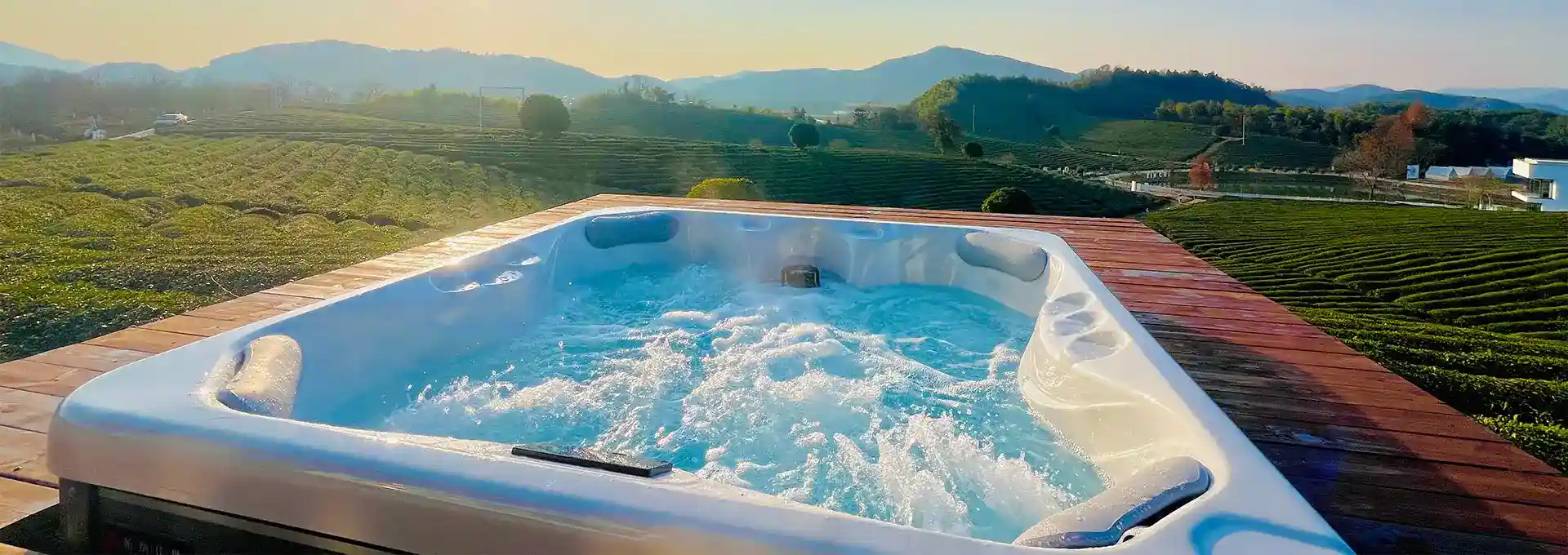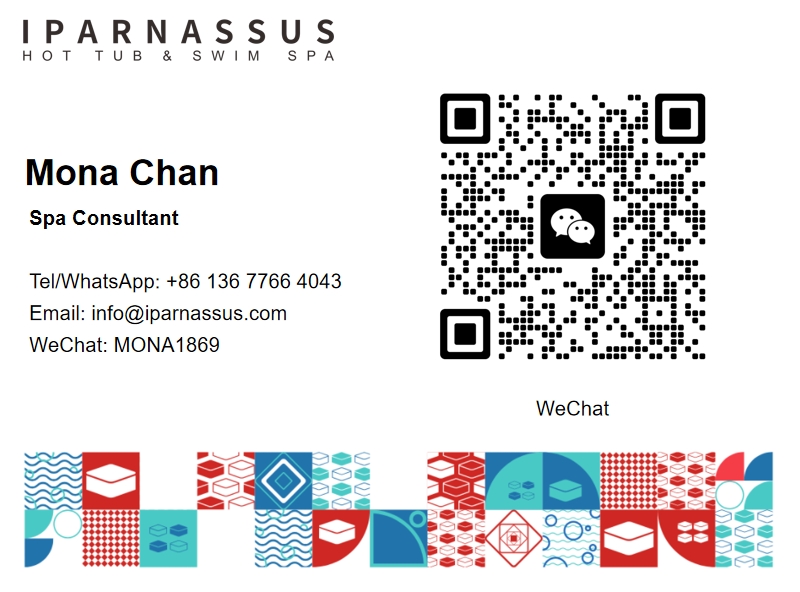How Do I Maintain Proper Water Chemistry and Sanitation in My Outdoor Swimming Spa?
2025-02-24 13:54:02
Maintaining proper water chemistry and sanitation in your outdoor swim spa is crucial for ensuring a safe and enjoyable experience. A well-maintained spa not only provides a clean and hygienic environment for relaxation but also protects the equipment and surfaces from damage caused by imbalanced water chemistry. This comprehensive guide will walk you through the essential steps and best practices for keeping your outdoor swimming spa in optimal condition.
What are the ideal chemical levels for my outdoor swimming spa?
Understanding and maintaining the ideal chemical levels in your outdoor swim spa is fundamental to ensuring a safe and comfortable swimming environment. The key parameters you need to monitor and adjust regularly include pH, alkalinity, sanitizer levels, and calcium hardness. Let's delve into each of these factors and explore why they're important and how to maintain them at optimal levels.
pH is perhaps the most critical factor in spa water chemistry. It measures the acidity or basicity of the water on a scale from 0 to 14, with 7 being neutral. For outdoor swimming spas, the ideal pH range is between 7.2 and 7.8. Maintaining the proper pH level is crucial because it affects the effectiveness of your sanitizer, the comfort of swimmers, and the longevity of your spa equipment.
If the pH is too low (acidic), it can cause eye and skin irritation, corrode metal components, and damage the spa surface. On the other hand, if the pH is too high (basic), it can lead to scale formation, cloudy water, and reduced sanitizer efficiency. To adjust pH levels, use pH increasers or decreasers as needed, following the manufacturer's instructions carefully.
Alkalinity acts as a buffer for pH, helping to prevent rapid fluctuations. The ideal total alkalinity range for outdoor swimming spas is between 80 and 120 parts per million (ppm). If the alkalinity is too low, the pH can become unstable and difficult to control. Conversely, high alkalinity can make it challenging to adjust pH and may lead to scaling. Use alkalinity increasers or decreasers to maintain the proper range.
Sanitizer levels are crucial for killing harmful bacteria and other microorganisms in your spa water. The most common sanitizers for outdoor swimming spas are chlorine and bromine. For chlorine, aim to maintain a level between 1 and 3 ppm. If you're using bromine, the ideal range is 3 to 5 ppm. Regular testing and adjusting of sanitizer levels are essential to ensure that your spa water remains safe and hygienic.
Calcium hardness refers to the amount of dissolved calcium in the water. The ideal range for outdoor swimming spas is between 150 and 250 ppm. Proper calcium hardness prevents water from becoming too soft (which can be corrosive) or too hard (which can cause scaling). Use calcium hardness increasers or decreasers to maintain the appropriate level.
To accurately measure and maintain these chemical levels, invest in a reliable water testing kit. Digital testers or test strips can provide quick and accurate readings. Test your spa water at least twice a week, or more frequently if the spa is used heavily or exposed to harsh weather conditions.
How often should I clean and maintain my outdoor swimming spa?
Regular cleaning and maintenance are essential for keeping your outdoor swim spa in top condition. The frequency of these tasks depends on various factors, including usage, environmental conditions, and the specific requirements of your spa model. However, a general maintenance schedule can help you stay on top of the most important tasks.
Daily maintenance tasks are simple but crucial. Skim the water surface to remove any debris, such as leaves or insects, that may have fallen into the spa. This prevents these materials from decomposing in the water and affecting the chemical balance. Additionally, check the water level and top it off if necessary to ensure proper circulation and filtration.
Weekly maintenance involves more thorough cleaning and chemical balancing. Test and adjust the water chemistry as discussed in the previous section. Clean the waterline with a soft sponge or cloth to remove any buildup of oils or debris. Inspect and clean the filter cartridges according to the manufacturer's instructions. This usually involves rinsing them with a hose or soaking them in a filter cleaning solution.
Monthly maintenance tasks include a more comprehensive cleaning of the spa. Drain and refill the spa completely, typically every 3-4 months or more frequently if it's heavily used. Before refilling, take this opportunity to clean the spa shell thoroughly with a non-abrasive cleaner designed for spa surfaces. Inspect all equipment, including pumps, heaters, and jets, for any signs of wear or malfunction.
Quarterly or seasonal maintenance is particularly important for outdoor swimming spas, as they are exposed to changing weather conditions. As seasons change, adjust your chemical treatment and cleaning routines accordingly. For example, you may need to increase sanitizer levels during hot summer months when usage is higher and bacterial growth is more rapid. In colder months, protect your spa from freezing by maintaining proper water levels and circulation.
Annual maintenance should include a professional inspection of your spa's electrical and mechanical components. This can help identify and address any potential issues before they become major problems. It's also a good time to replace any worn parts, such as o-rings or pump seals.
In addition to these regular maintenance tasks, it's important to address any issues promptly as they arise. If you notice any unusual odors, cloudiness in the water, or problems with equipment function, investigate and resolve these issues immediately to prevent them from escalating.
Remember to keep a log of your maintenance activities, including chemical additions and equipment checks. This can help you track patterns and anticipate when certain tasks need to be performed. It's also useful information to have on hand if you ever need to consult with a professional about spa issues.
What are the best practices for shocking my outdoor swimming spa?
Shocking your outdoor swim spa is a crucial part of maintaining water quality and ensuring a safe, hygienic environment for users. "Shocking" refers to the process of adding a large dose of oxidizer to the water to eliminate contaminants, break down organic compounds, and restore the effectiveness of your regular sanitizer. Understanding when and how to shock your spa properly can significantly improve its overall maintenance and longevity.
The frequency of shocking your spa depends on several factors, including usage, environmental conditions, and the current state of your water. As a general rule, it's recommended to shock your spa at least once a week, or more frequently if it's heavily used or exposed to factors that can quickly compromise water quality, such as high temperatures or frequent rainfall.
There are two main types of shock treatments: chlorine shock and non-chlorine shock. Chlorine shock is more potent and is typically used for more severe contamination or when you need to quickly raise the chlorine levels in your spa. Non-chlorine shock, often based on potassium monopersulfate, is gentler and allows for quicker re-entry into the spa after treatment.
Before shocking your spa, it's essential to test and balance your water chemistry. Ensure that the pH and alkalinity are within the ideal ranges discussed earlier. This will maximize the effectiveness of the shock treatment and prevent potential issues like scaling or equipment damage.
To shock your spa, first calculate the correct amount of shock product based on your spa's volume and the product's instructions. It's crucial not to underdose, as this can lead to ineffective treatment, or overdose, which can cause damage to your spa and potentially harm users.
When adding the shock, distribute it evenly across the surface of the water while the jets are running. This ensures proper circulation and distribution of the shock throughout the spa. Leave the cover off and allow the jets to run for at least 15-30 minutes after adding the shock. This helps the oxidation process and allows excess chemicals to off-gas.
After shocking, it's important to wait before using the spa. For chlorine shock, you typically need to wait 24-48 hours or until the chlorine levels have returned to the normal range of 1-3 ppm. Non-chlorine shock generally allows for quicker re-entry, often within 15-30 minutes, but always follow the product's specific instructions.
In addition to regular weekly shocking, there are certain situations when additional shock treatments may be necessary. These include after heavy use (such as a spa party), if there's been a fecal accident in the spa, when reopening a spa that's been closed for a while, or if you notice signs of poor water quality like cloudy water or unpleasant odors.
It's also worth noting that shocking is not a substitute for regular sanitizer maintenance. While shocking helps to eliminate contaminants and reset your water chemistry, you still need to maintain proper sanitizer levels between shock treatments to ensure ongoing protection against bacteria and other harmful microorganisms.
When shocking your spa, always prioritize safety. Wear protective gear such as gloves and eye protection when handling chemicals. Never mix different types of shock products, as this can create dangerous chemical reactions. Store shock products in a cool, dry place away from direct sunlight and out of reach of children and pets.
By incorporating regular shock treatments into your spa maintenance routine and following these best practices, you can ensure that your outdoor swim spa remains clean, safe, and enjoyable for all users. Remember, consistent and proper maintenance is key to prolonging the life of your spa and maximizing your enjoyment of it.
For more information on outdoor swim spa installations and our products, please feel free to contact us at info@iparnassus.com.
References
- Centers for Disease Control and Prevention. (2022). Healthy Swimming/Recreational Water.
- Pool & Hot Tub Alliance. (2021). Water Chemistry Basics for Residential Pools and Spas.
- World Health Organization. (2020). Guidelines for safe recreational water environments.
- Leslie's Pool Supplies. (2023). How to Maintain Your Hot Tub Water Chemistry.
- Swim University. (2023). Hot Tub Chemistry 101.
- Hot Spring Spas. (2022). Hot Tub Maintenance Guide.
- Aqua Magazine. (2021). The Basics of Water Chemistry for Spas.
- Master Spas. (2023). Hot Tub Maintenance Schedule.
- Bullfrog Spas. (2022). How to Shock a Hot Tub.
- Hayward Pool Products. (2023). Pool & Spa Water Chemistry Guide.



